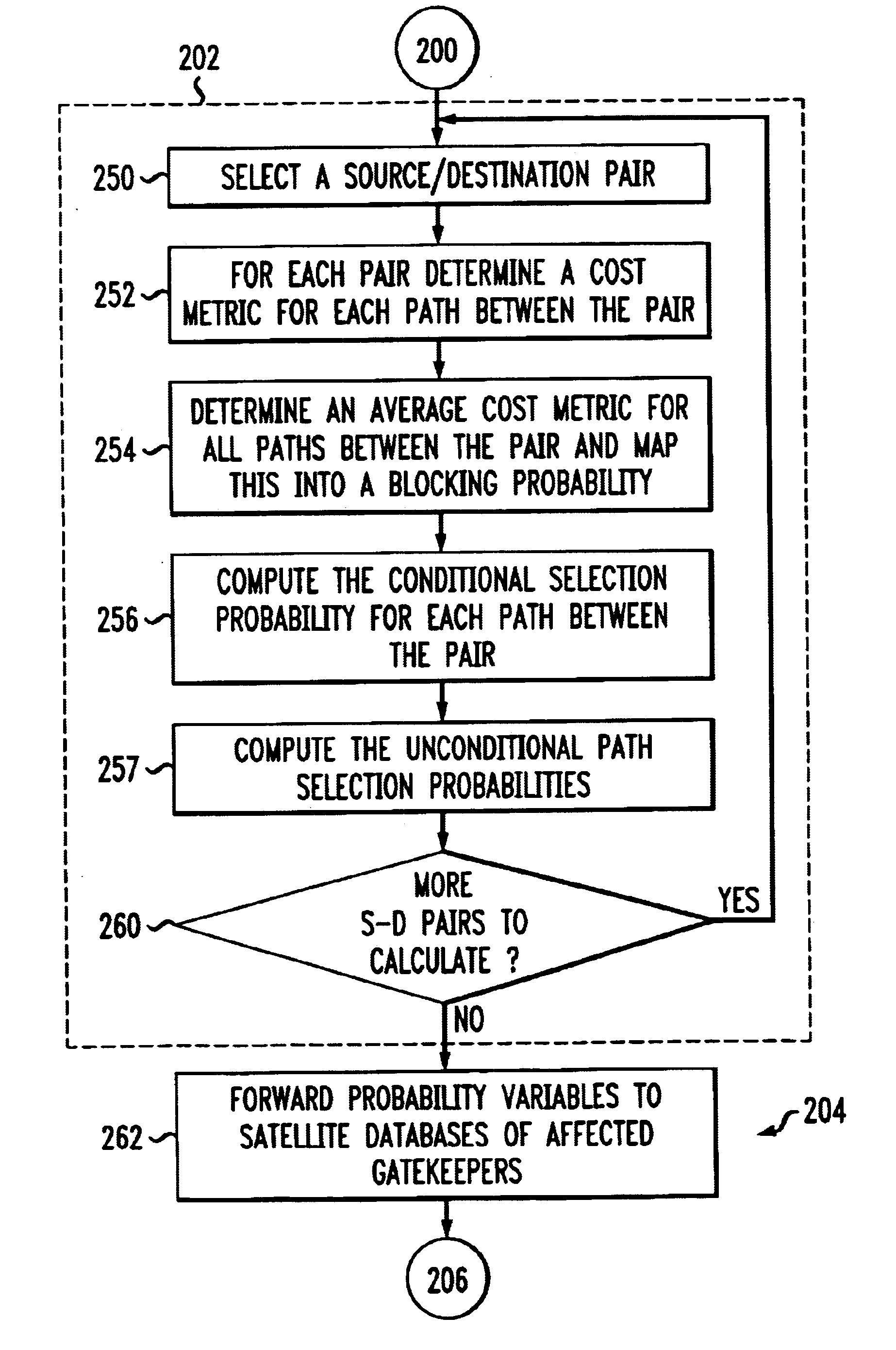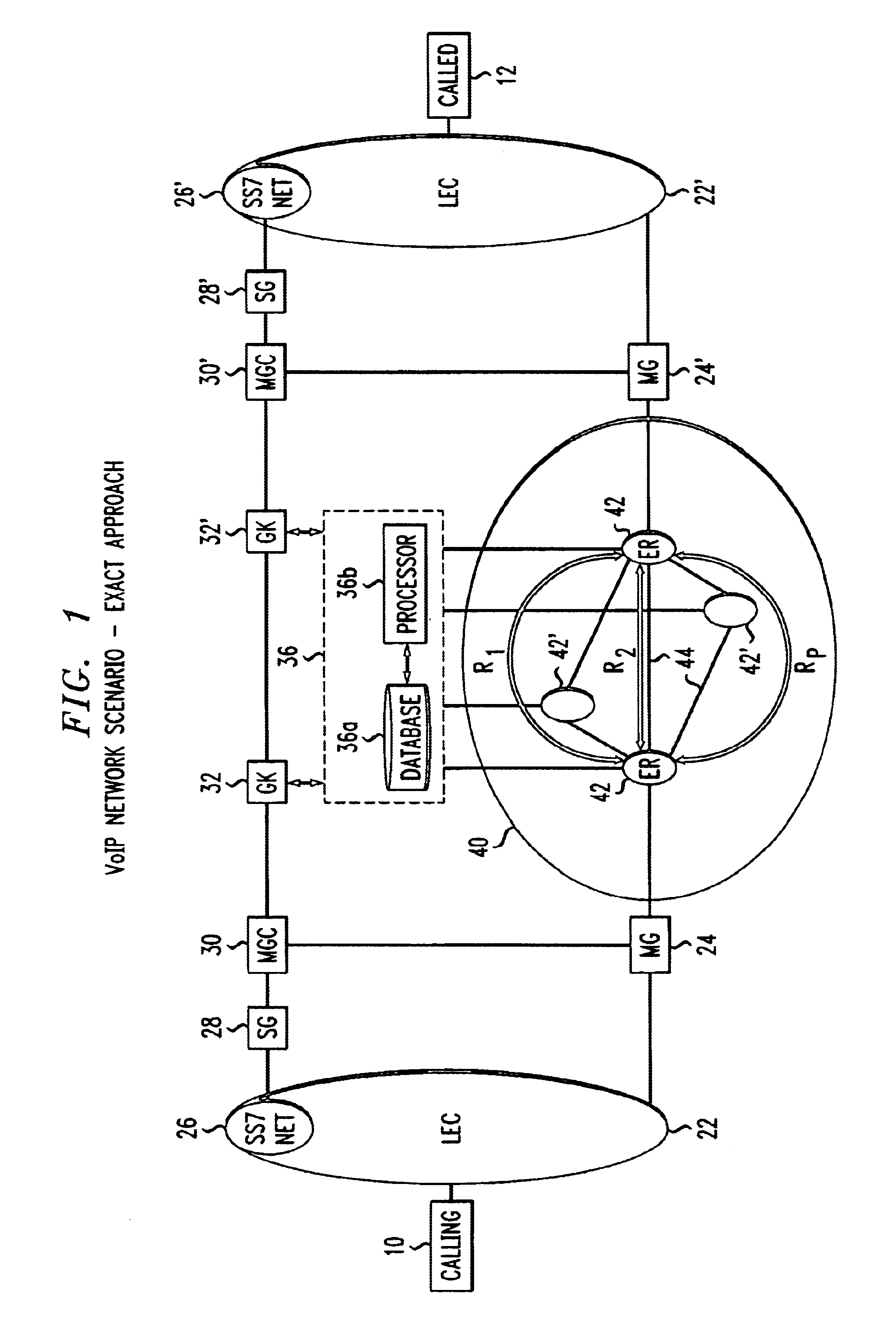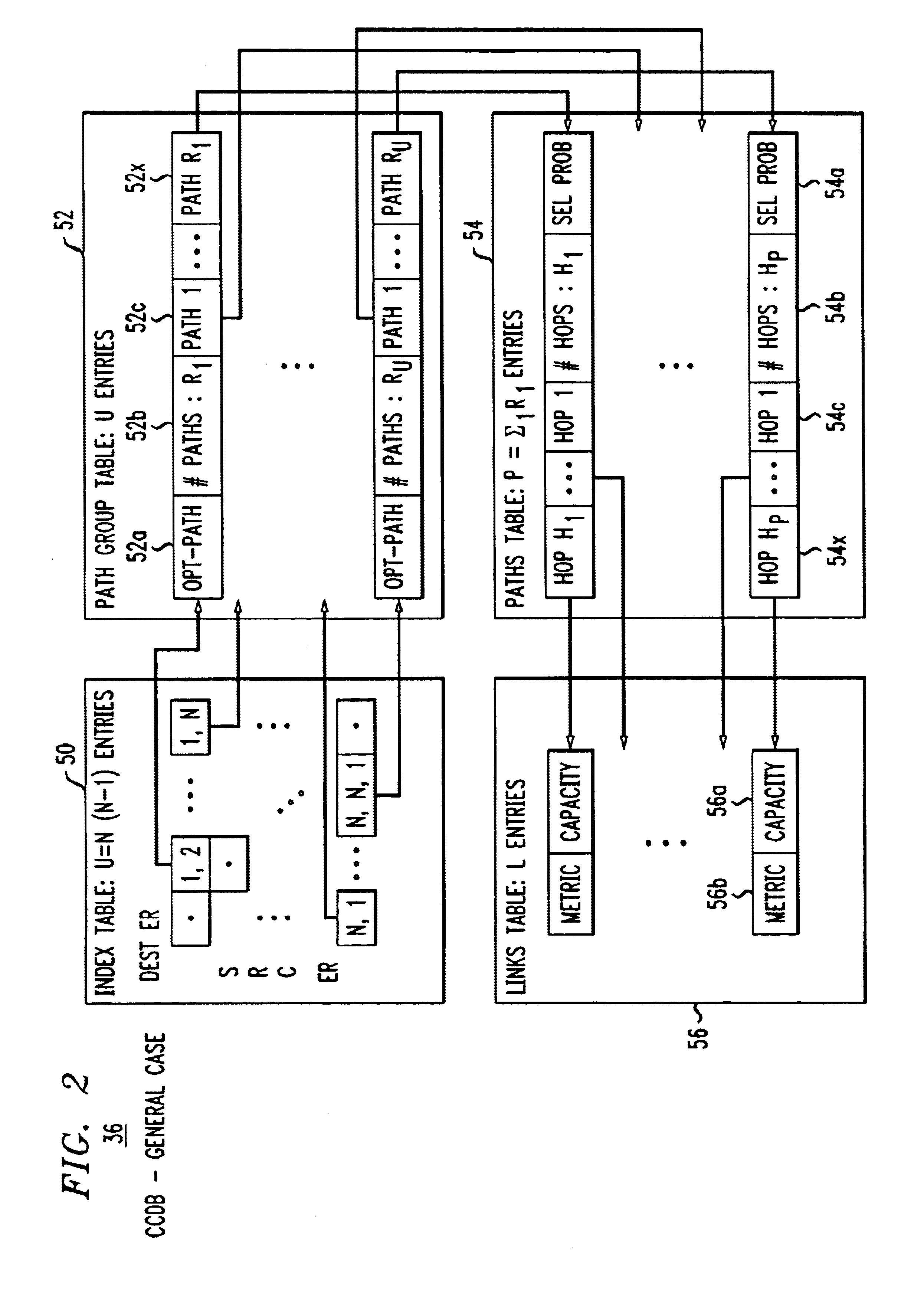Method and apparatus to provide centralized call admission control and load balancing for a voice-over-IP network
a voice-over-ip network and call admission control technology, applied in the field of network communication systems, can solve the problems of degrading the performance of data transfer, severely limiting the ability to provide quality-of-service guarantees, and the edge-devices not being aware of congestion levels within the interior of the network, so as to improve the quality of voice service, improve bandwidth sharing, and optimize network utilization
- Summary
- Abstract
- Description
- Claims
- Application Information
AI Technical Summary
Benefits of technology
Problems solved by technology
Method used
Image
Examples
Embodiment Construction
[0046]The discussion that follows will address the general case, where a set of alternate spatially diverse MPLS explicit paths is assumed to be set up between each pair of source and destination edge nodes. The plurality of paths between a given pair of edge nodes allows the load balancing capability embodied in the present invention. However, unlike the MPLS trunking approach mentioned earlier, there is no per-path bandwidth reservation in our model. As will be explained later, voice bandwidth reservation on each network link is done here on an aggregate basis for all the MPLS paths carrying voice on the link. A mechanism such as Diffserv is used for this purpose, independently of MPLS. Thus our solution is not affected by the scaling concerns that pertain to the trunking approach as observed earlier. Note that the admission control feature of the proposed scheme can also be implemented in conjunction with the special case based on the conventional OSPF routing instead of MPLS. Ho...
PUM
 Login to View More
Login to View More Abstract
Description
Claims
Application Information
 Login to View More
Login to View More - R&D
- Intellectual Property
- Life Sciences
- Materials
- Tech Scout
- Unparalleled Data Quality
- Higher Quality Content
- 60% Fewer Hallucinations
Browse by: Latest US Patents, China's latest patents, Technical Efficacy Thesaurus, Application Domain, Technology Topic, Popular Technical Reports.
© 2025 PatSnap. All rights reserved.Legal|Privacy policy|Modern Slavery Act Transparency Statement|Sitemap|About US| Contact US: help@patsnap.com



